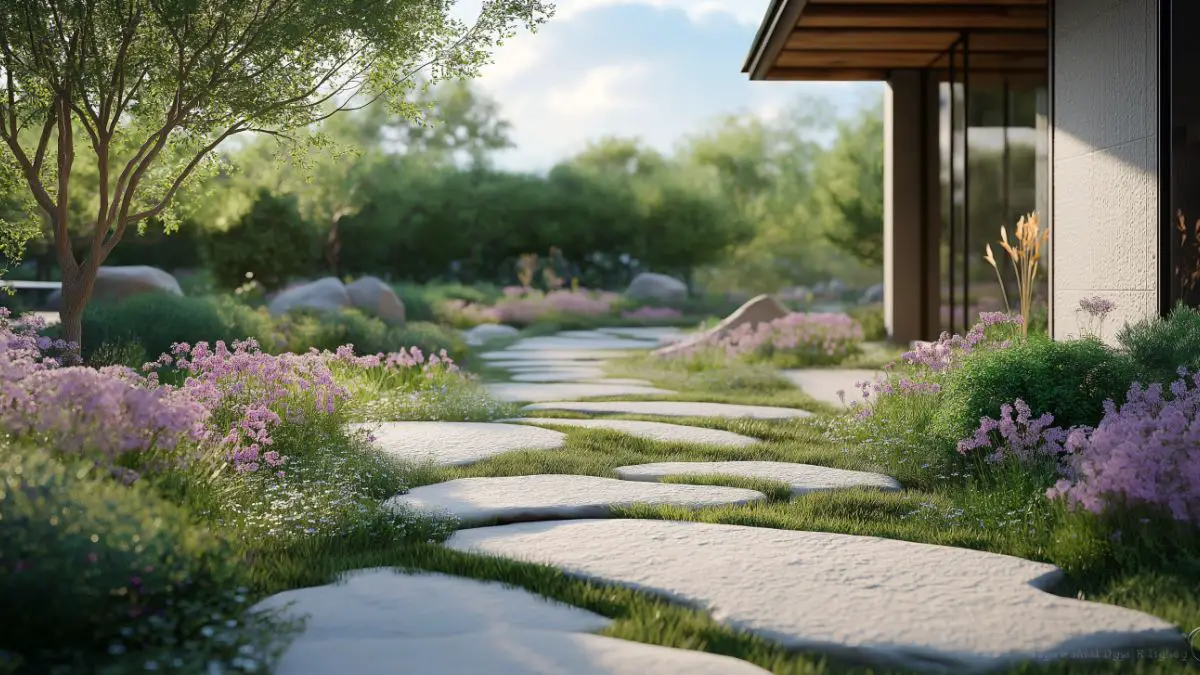Sustainable Landscape Design Ideas to Create a Beautiful Eco-Friendly Garden
Table of Contents
As climate concerns grow and homeowners seek more intentional lifestyles, sustainable landscape design has emerged as one of the most rewarding ways to merge aesthetics with eco-conscious living. Your garden doesn’t just have to look good—it can do good, too.
According to the Environmental Protection Agency (EPA), traditional lawn and landscape practices consume over 9 billion gallons of water daily in the U.S. alone. Add to that the reliance on chemical fertilizers and gas-powered equipment, and it becomes clear: there’s a better way to garden.
Designing an eco-friendly garden isn’t just about cutting waste—it’s about rethinking your space for harmony with the natural world. That means using native plants, embracing natural irrigation techniques, reducing turfgrass, and supporting biodiversity.
In this post, you’ll discover sustainable landscape design ideas that are beautiful, practical, and planet-friendly. Whether you’re updating a small yard or planning a full garden redesign, these tips will help you create a thriving outdoor space that reflects your values and minimizes your footprint—all while looking incredibly stylish.
1. Choose Native and Climate-Appropriate Plants
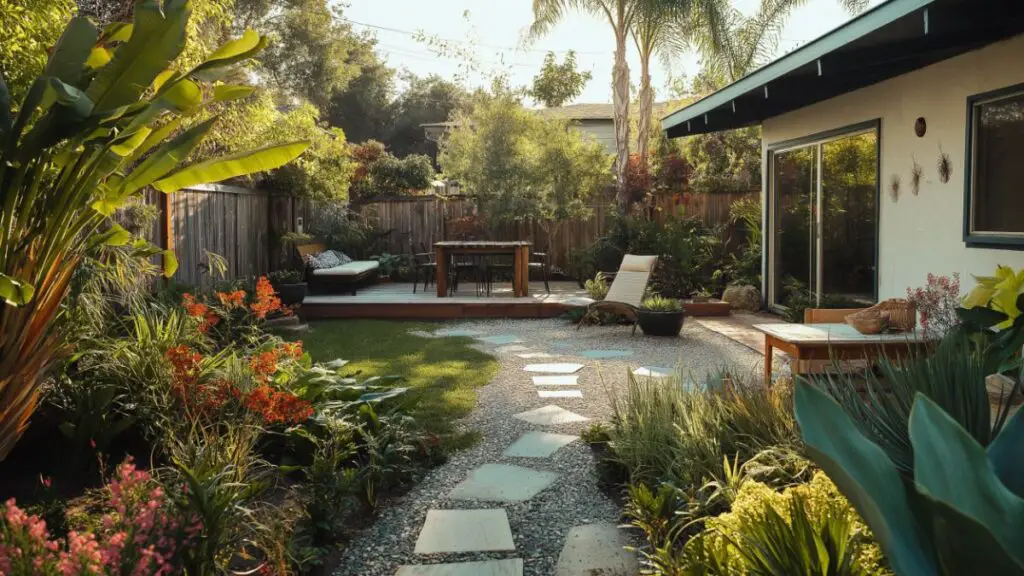
- Native plants require less water, fertilizer, and maintenance.
- Support pollinators and local wildlife with nectar-rich options.
- Avoid invasive species that disrupt natural ecosystems.
- Match plant selection with your USDA Hardiness Zone.
- Use drought-tolerant varieties in arid climates.
Benefits of Native Plants
- Deep roots reduce erosion and improve soil health.
- Better resistance to local pests and diseases.
- Seasonal beauty and natural resilience.
Popular Native Plants by Region
- Northeast: Bee balm, black-eyed Susan
- Southwest: Desert marigold, agave
- Pacific Northwest: Sword fern, red columbine
Table: Native vs. Non-Native Plant Comparison
| Feature | Native Plants | Non-Native Plants |
|---|---|---|
| Water Use | Low | Moderate to high |
| Pest Resistance | High | Variable |
| Wildlife Support | Excellent | Limited |
| Maintenance | Low | Higher |
2. Reduce Lawn Area and Replace with Eco Alternatives
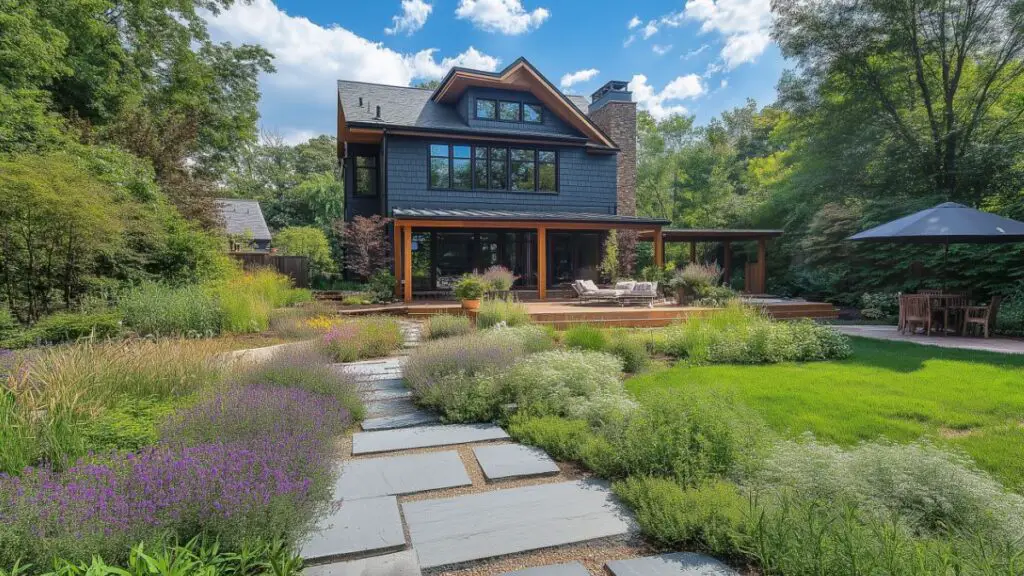
Traditional lawns are one of the most water- and chemical-intensive landscaping features. Replacing or reducing turfgrass is a powerful move toward sustainability—and it opens the door to more creative, biodiverse design.
Alternatives to Traditional Lawns
- Groundcovers: Creeping thyme, clover, or moss require little mowing and are pollinator-friendly.
- Gravel or mulch beds: Add structure and visual interest with low-maintenance texture.
- Perennial meadows: A mix of ornamental grasses and wildflowers offers habitat and color.
- Hardscaping: Use pavers, flagstone, or decomposed granite for paths or patios.
Partial Lawn Reduction Strategy
- Replace hard-to-water areas (slopes, corners) with planting beds.
- Convert a portion of lawn into a kitchen garden or herb spiral.
- Use mulch around trees to eliminate mowing and retain moisture.
Table: Lawn Alternatives and Their Eco Impact
| Alternative Type | Water Requirement | Maintenance Level | Wildlife Value |
|---|---|---|---|
| Creeping Thyme | Very Low | Low | High |
| Clover | Low | Low | Moderate |
| Gravel with Plants | None | Very Low | Low |
| Wildflower Meadow | Moderate (initial) | Moderate | Very High |
By embracing alternative groundcovers, you reduce chemical use and promote biodiversity while creating a more dynamic landscape.
3. Install Permeable Surfaces for Water Managemen
- Use permeable pavers, gravel, or open-joint systems for patios and walkways.
- Reduce runoff and recharge groundwater by allowing rain to filter naturally.
- Consider rain gardens to collect and absorb stormwater.
- Direct downspouts into garden beds instead of the street.
- Use swales (shallow ditches) for passive drainage.
Why Permeable Matters
- Prevents erosion and flooding.
- Filters pollutants naturally.
- Can be paired with native landscaping for greater impact.
Table: Common Permeable Surface Options
| Material Type | Permeability Rating | Visual Style |
|---|---|---|
| Gravel | High | Rustic/Natural |
| Permeable Pavers | Medium–High | Modern/Structured |
| Wood Chips | Moderate | Organic/Informal |
4. Embrace Mulching and Composting
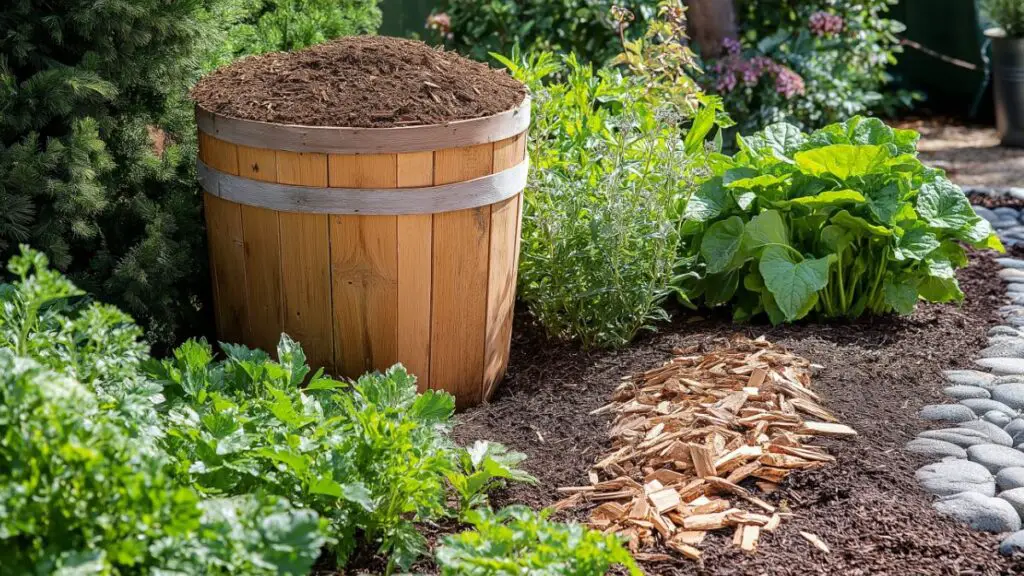
- Mulch garden beds to retain moisture and suppress weeds.
- Use organic mulch (wood chips, bark, straw) instead of synthetic.
- Start a compost bin or pile to recycle food and yard waste.
- Apply compost to enrich soil and reduce need for fertilizers.
- Avoid dyed or rubber mulches that may contain toxins.
Composting Basics for Beginners
- Green materials: vegetable scraps, coffee grounds.
- Brown materials: leaves, shredded paper, cardboard.
- Turn the pile regularly and maintain moisture balance.
Table: Mulch and Compost at a Glance
| Material | Function | Eco Benefit |
|---|---|---|
| Wood Mulch | Moisture retention | Reduces water use |
| Compost | Nutrient-rich amendment | Replaces synthetic fertilizer |
| Straw | Weed suppression | Biodegradable + low cost |
5. Incorporate Wildlife-Friendly Features
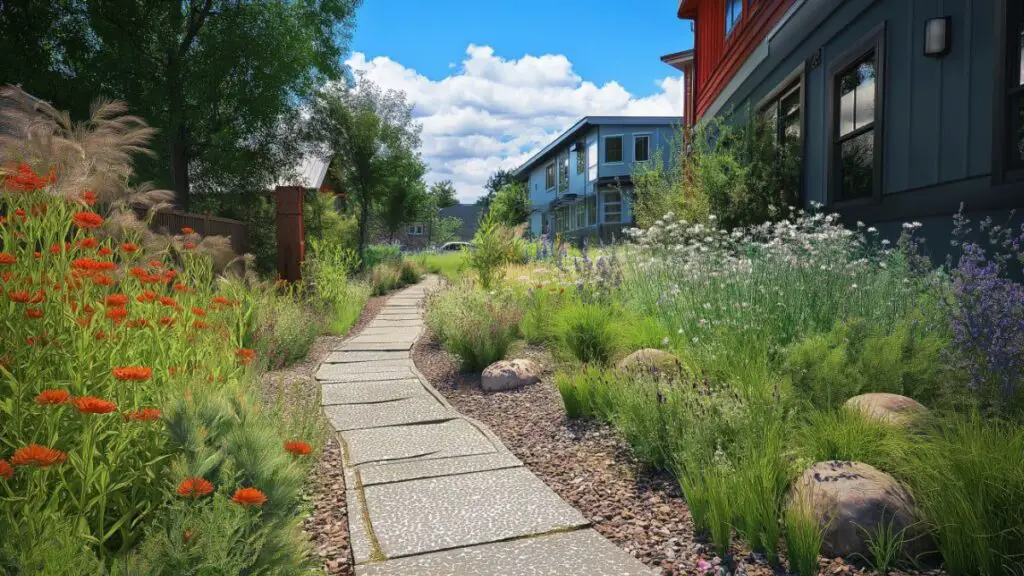
- Install bird baths, native bee houses, or butterfly-friendly plants.
- Create brush piles or rock stacks for small animals and insects.
- Avoid pesticides and herbicides that harm beneficial species.
- Use plants that bloom across seasons to support pollinators year-round.
- Add water features like shallow ponds or fountains with recirculating systems.
Pollinator Garden Essentials
- Flowers with single, open blooms (zinnias, coneflowers).
- Continuous bloom from early spring to fall.
- Group similar plants together for visibility and efficiency.
Table: Garden Features That Support Wildlife
| Feature | Species Supported | Seasonal Benefit |
|---|---|---|
| Bird Bath | Birds, bees | Year-round hydration |
| Bee Hotel | Solitary native bees | Spring + summer homes |
| Native Perennials | Butterflies, insects | Nectar from bloom to frost |
6. Use Energy-Efficient and Solar Lighting
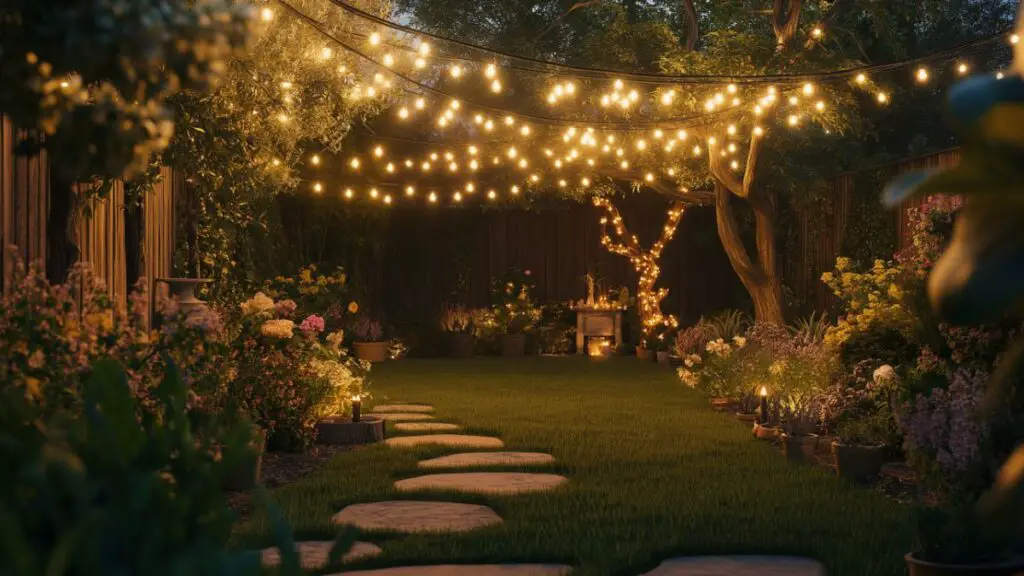
Sustainable landscaping doesn’t stop with plants—it also includes your lighting. Solar-powered and LED options reduce energy consumption and create ambiance without waste.
Solar Lighting Ideas
- Stake lights along garden paths or driveways.
- Solar lanterns in trees or patio corners.
- Motion-sensor solar lights near entries or garage areas.
- String lights powered by small solar panels.
LED Options for Efficiency
- Use LED uplights on trees and features.
- Choose warm-temperature bulbs (2700K–3000K) for cozy ambiance.
- Set timers or motion sensors to reduce unnecessary use.
Table: Energy-Saving Outdoor Lighting Options
| Lighting Type | Power Source | Eco Benefit |
|---|---|---|
| Solar Path Lights | Solar | No electricity required |
| LED Uplights | Electric (Low Volt) | Long lifespan, low wattage |
| Motion Lights | Solar or Plug-In | Reduces excess use |
Conclusion
Designing a sustainable garden isn’t about sacrificing beauty—it’s about enhancing it with purpose. From choosing native plants to minimizing lawn space and embracing solar lighting, each step toward eco-friendly landscaping adds value to your home and harmony to the environment.
Sustainable landscapes support local ecosystems, reduce resource waste, and create outdoor spaces that thrive year-round with minimal impact. With thoughtful planning and a few well-chosen features, your garden can become a sanctuary for you—and for the planet.
By integrating these sustainable landscape design ideas, you’ll cultivate more than just a stylish yard. You’ll grow a space that gives back—to nature, your community, and future generations.

